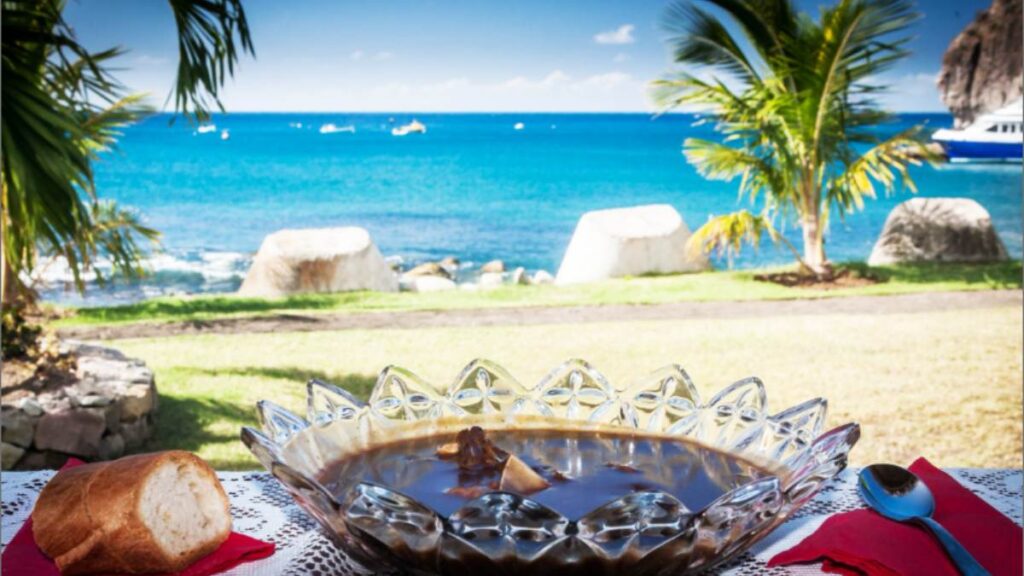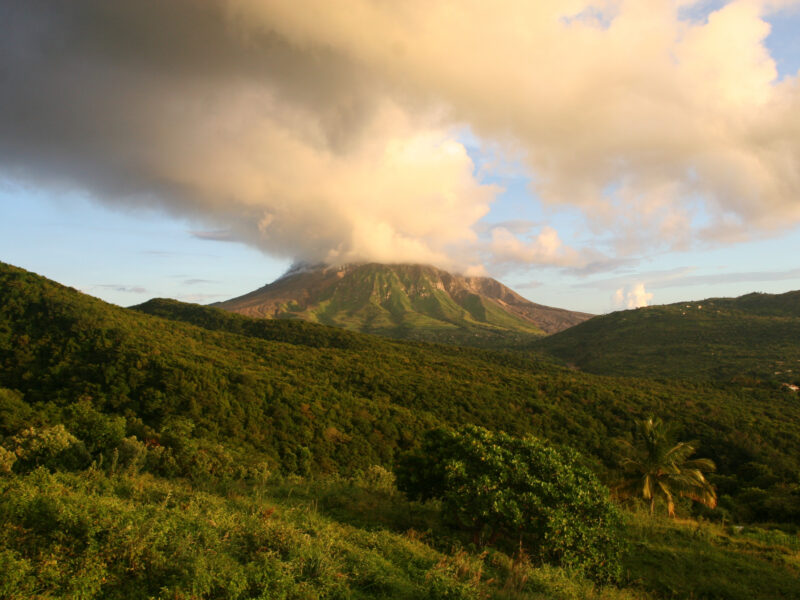The British Overseas Territory of Montserrat is a small, mountainous island in the Caribbean Sea. Despite being a lesser-known destination, it is a gem that is worth exploring. The island is often referred to as the “Emerald Isle of the Caribbean” owing to its lush greenery, resemblance to Ireland’s coastal landscape, and Irish heritage. Uncover the island’s attractions, activities, and history, providing a comprehensive guide to this Caribbean paradise.
Getting to Montserrat
Getting to Montserrat is relatively easy, but it does require a bit of planning. When arriving by air, the V.C. Bird International Airport in Antigua is the first stop on your journey, and from there it’s just a short 20-minute flight to Montserrat. Fly Montserrat is currently the only island-based airline with scheduled services to Antigua. The journey to Montserrat is sure to be an adventure in itself.
Options for transportation
In Montserrat, there are a few options for getting around the island. Taxis and rental cars are available, but the island’s narrow, winding roads can be challenging for inexperienced drivers. Alternatively, visitors can take advantage of the island’s public transportation system, which consists of small vans and buses that travel along set main routes. The bus schedules are easy to understand; simply extend your hand out to hail a ride. For those who prefer a more leisurely pace, walking is also a great way to explore the island’s natural beauty and historic sites.
Best time to visit
Due to the island’s tropical climate, warm, sunny weather is experienced all year round. However, the best time to visit the island is from December to April. During this time, the weather is usually cool, mild, and sunny, making it ideal for outdoor activities such as hiking. The island’s festivals and cultural events, such as the St. Patrick’s Day celebrations in March, also makes it a popular time to visit.
August through October are normally the hottest months of the year. Visitors should be aware that the hurricane season runs from June to November, and although Montserrat is rarely hit by hurricanes, there is still a high chance of experiencing rain showers.
Explore Montserrat’s natural beauty
One of the most appealing aspects of Montserrat is its natural beauty. The island is home to several national parks and nature reserves that offer breathtaking views of the surrounding landscape. The Soufriere Hills volcano is the most prominent natural feature on the island, and it has shaped the landscape in fascinating ways.
For those who love hiking, the Oriole walkway, the most popular trail among visitors, offers an excellent opportunity to witness the beauty of the Montserrat Oriole, the country’s national bird, through either its mesmerizing sight or its enchanting chirping.
Birdwatchers can hike Centre Hills and spot exotic bird species. Adventure lovers can take a Montserrat boat tour to see the island’s majestic cliffs and marvel at the underwater world through scuba diving.
Another popular attraction is the Montserrat Volcano Observatory, which provides visitors with an opportunity to learn about the island’s volcanic history and ongoing monitoring efforts.
Montserrat boasts of stunning beaches for visitors to enjoy. From the secluded Rendezvous Beach to the lively Woodlands Beach, there’s a beach for every type of traveler. Snorkeling, diving, and paddleboarding are just a few of the water activities available, and the serene waters make it an ideal spot for swimming.
The abandoned town of Plymouth is Montserrat’s most prominent tourist destination, being the only town buried by a volcano in the Americas. The desolate atmosphere of the town is due to its uncanny stillness, a lack of wildlife, and the gradual overgrowth of volcanic ash. This eerie ambiance creates a ghost-town feel that is sure to fascinate and intrigue visitors.
Discover Montserrat’s rich cultural heritage
In addition to its natural beauty, Montserrat also has a rich cultural heritage that is worth exploring. The island has a strong Irish influence, which is evident in its music, dance, and festivals. The St. Patrick’s Day celebrations on Montserrat are legendary and attract visitors from all over the world.
Another aspect of Montserrat’s cultural heritage is its Afro-Caribbean roots. The island is home to several historical sites and museums. The Montserrat National Museum is a must-visit for anyone interested in learning about the island’s history and culture.
Montserrat’s music scene is also worth exploring. The island is known for calypso, and the annual Montserrat Music Festival as well as the Cudjoe Head festival are highlights of the cultural calendar.
Explore Montserrat’s cuisine
No trip to Montserrat would be complete without sampling the island’s unique cuisine. Montserratian cuisine is a fusion of African, Irish, and Caribbean influences, and it is renowned for its bold flavors and hearty portions.
Some of the island’s most popular dishes include goat water, a hearty stew made with goat meat and spices, and fish cakes, which are made with salted cod and spices. For dessert, try the Montserratian specialty, duckna. Made from sweet potatoes, this dish is boiled with spices and coconut to create a dense, pudding-like consistency and is traditionally wrapped in banana leaf, or “chainy bush”.

Montserrat’s history
Montserrat’s history and culture have been shaped over thousands of years by a variety of events and settlers. The Tainos Indians were the original inhabitants of the island. Christopher Columbus, who discovered the island during his second voyage in 1492, named it Montserrat after a monastery in Spain. The Irish were the first immigrants on the island, and in 1632 it became a British colony.
The island’s economy was built around sugar and sea island cotton , along with rum production. Throughout the 20th century, Montserrat has become known for its unique blend of Anglo-Irish and African cultures.
The island’s modern history has been shaped by its volcanic activity. In 1995, the Soufriere Hills volcano erupted, causing widespread devastation and forcing the evacuation of much of the island’s population. Today, the volcano is closely monitored, and visitors can learn about the ongoing efforts to manage this natural phenomenon.
